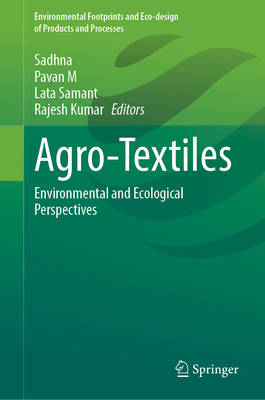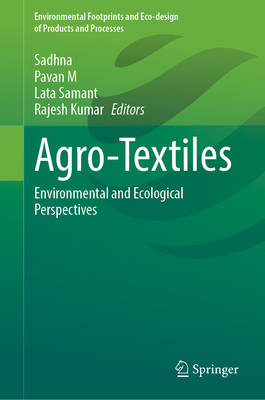
- Afhalen na 1 uur in een winkel met voorraad
- Gratis thuislevering in België vanaf € 30
- Ruim aanbod met 7 miljoen producten
- Afhalen na 1 uur in een winkel met voorraad
- Gratis thuislevering in België vanaf € 30
- Ruim aanbod met 7 miljoen producten
Zoeken
Agro-Textiles
Environmental and Ecological Perspectives
€ 305,45
+ 610 punten
Omschrijving
This book provides a comprehensive exploration of agro-textiles through the lens of sustainability, offering insights into their environmental, ecological, and economic impacts. Designed to bridge the gap between innovative textile technologies and sustainable agricultural practices, it equips researchers, practitioners, and policymakers with the knowledge to drive environmentally responsible solutions in agro-textiles. The book is organized into six parts, beginning with the fundamentals of agro-textiles and their applications in modern agriculture. It explores the challenges posed by traditional agro-textile production methods and introduces sustainable alternatives. The second part focuses on environmental assessments, including life cycle analysis, carbon and water footprints, and ecological impact evaluations. Case studies and real-world applications offer readers a grounded understanding of these methodologies in action. In the third section, the book shifts to design and innovation, showcasing cutting-edge approaches to sustainable agro-textile manufacturing. It explores eco-design principles, biodegradable materials, and novel technologies that reduce resource consumption and promote circularity. The fourth part tackles waste management and the circular economy, addressing the pressing issue of agro-textile waste. Topics include recycling technologies, end-of-life management strategies, and policies to minimize solid waste generation. Standards, policies, and market dynamics are the focus of the fifth section. Global certifications, regulatory frameworks, and market trends are analyzed to identify drivers of sustainable practices in agro-textiles. This segment underscores the role of governance and market forces in shaping a greener industry. Finally, the book looks to the future, outlining innovations, challenges, and policy implications to advance sustainable agro-textiles. This concluding section serves as a roadmap for researchers and industry stakeholders aiming to balance technological progress with ecological responsibility.
Specificaties
Betrokkenen
- Uitgeverij:
Inhoud
- Taal:
- Engels
- Reeks:
Eigenschappen
- Productcode (EAN):
- 9783032134769
- Verschijningsdatum:
- 1/03/2026
- Uitvoering:
- Hardcover
- Formaat:
- Genaaid
- Afmetingen:
- 155 mm x 235 mm

Alleen bij Standaard Boekhandel
+ 610 punten op je klantenkaart van Standaard Boekhandel
Beoordelingen
We publiceren alleen reviews die voldoen aan de voorwaarden voor reviews. Bekijk onze voorwaarden voor reviews.







